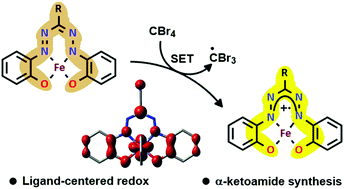Redox noninnocence of the formazanate ligand applied to catalytic formation of α-ketoamides†
Abstract
The formazan ligands have been investigated as redox-noninnocent backbones for a long time. Despite their well-established behaviour as redox reservoirs, the demonstration of catalytic efficiency governed by redox noninnocence remains elusive. We report an iron–formazanate molecule for efficiently preparing α-keto amides, where a crucial reductive cleavage of the substrate molecule is tightly regulated by the electron donation from the formazanate, in a reversible manner.

- This article is part of the themed collection: 2022 Emerging Investigators


 Please wait while we load your content...
Please wait while we load your content...